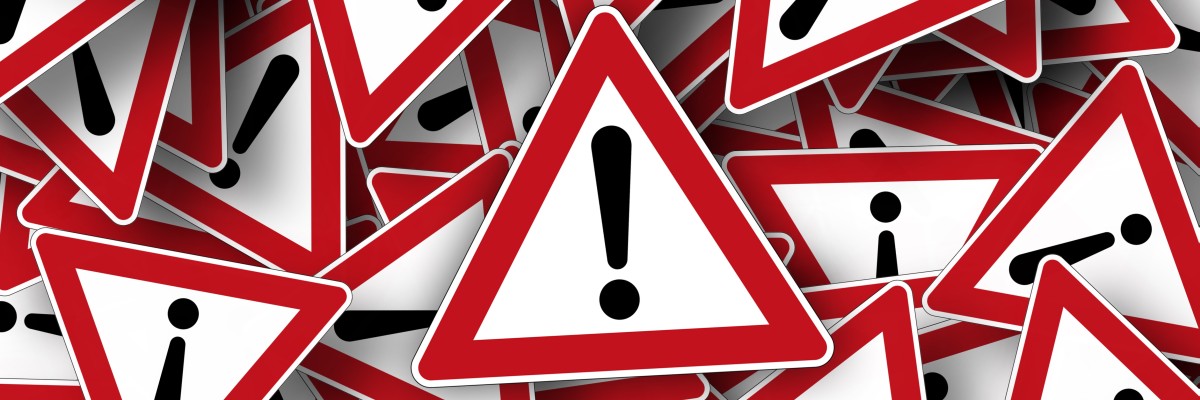Man, almost starting from his birth, is asked to pay attention. First with jingling toys, then: “Be careful what you eat!”; “Be careful how you cross the street!”; “Pay attention to your lesson!”; “Check out that girl!”; “Be careful how you drive!”; “Watch the steps!”; “Are you still paying attention?”
Unlike animals, humans have a considerably increased attention capacity. No cat has watched “Seven Samurai” till the end.
But how focused are you? Less than you think. I’ll prove it to you right now! And I’ll tell you what you can do about it…
On this page:
Are you ready? Set! Go!
Let’s take a test! It only has a maximum effect the first time, so it’s important to follow the instructions. If you’ve seen it on another occasion, try it again!
We have two teams: one in white, the other one in black. Each has one basketball. Your job is to count exactly how many passes the team in white does. Only the ones in white, not the ones in black. Focus and go ahead!
So what are your results?!
The test was conceived by Ulric Neisser and Robert Becklen in 1975, with superimposed videos, in order for it to be more difficult to follow the players – so not a situation that can be seen in reality 1)”Selective looking and the noticing of unexpected events” – study conducted by Robert Becklen and Daniel Cervone, published in Memory & Cognition, no. 6 from November 1983.
In 1999, Daniel Simons and Christopher Chabris reproduced this idea, this time without “special effects”. It’s called “the invisible gorilla test”. While players from both teams are doing passes, a “gorilla” (in the above version, a “bear”) appears in the frame. Half will concentrate on counting the passes and will not observe the bizarre character 2)”Gorillas in our midst: sustained inattentional blindness for dynamic events” – study conducted by Daniel J. Simons and Christopher F. Chabris, published in Perception in 1999. Even among those who noticed, most of them do not see it during its first appearance. It seems unbelievable, because it is obvious when you watch it while being relaxed. But when you’re very focused on something, you do not see the rest.
The brain has the ability to mentally suppress even the obvious things, if they are not the followed objective 3)”Suppression of Salient Objects Prevents Distraction in Visual Search” – study conducted by John M. Gaspar and John J. McDonald, published in The Journal of Neuroscience on April 16, 2014. In psychology, the phenomenon is called inattentional blindness or perceptual blindness 4)”Meet Your Soul: A Powerful Guide to Connect with Your Most Sacred Self” by Elisa Romeo, book published by Hay House in 2015.
Do not think that it only happens when someone tricks you to pay attention to something else (the way illusionists do). You have such “blindness” often, only you don’t know about it. Usually it’s not a problem. But unfortunately, there are exceptions. Many traffic accidents happen because the driver was too focused on one part of driving (for example, the dashboard) or when using their mobile phone. Or a pedestrian wasn’t paying attention because he was trying to be very careful not to step in a puddle, not to mention he was probably pondering some worried thoughts.
You know, there is a reason why they say that you have “blind rage”. You really are! When you focus only on what pissed you off, many things get passed you. Because this phenomenon is not vision specific, but general.
This “blindness” looks bad. But it is not always this way. Remember that when you want to sleep, you close your eyes. Basically, you temporarily go “blind”, to get to sleep. Something similar happens with perceptual blindness. It is useful, even essential, so that we can concentrate on what we consider important. Problems arise when you do not judge the priorities correctly and miss something important.
I remember when I was in school, I turned on the radio to the most boring shows when I was doing homework in subjects that I didn’t have a particular interest, because it helped me concentrate. Actually, I was using the perceptual blindness for a useful, conscious purpose. I was concentrating on what I had to do, so that the rest did not bother me. (This method works, but not for long periods of time because it is mentally demanding.)
Speed limit
“As quick as thought” – it is said. We are very proud of our thinking speed. But is thinking that fast?
Neural impulses move very fast, about 100 meters per second 5)”Essential Cell Biology” by Bruce Alberts, Dennis Bray, Karen Hopkin, Alexander Johnson, Julian Lewis, Martin Raff, Keith Roberts and Peter Walter, book published by Garland Science in 2013. But thoughts are not just simple neural impulses, but complex processes. A single image that reaches the brain, triggers a real “mental storm”. Different details should be recognized, interpreted, associated with existing knowledge, valued by their importance, etc. And all this is slower than you think.
In a classic psychological experiment, subjects watch a sequence of random letters, and between them numbers appear, which must be counted. If two digits come in a row one after the other in less than half a second, the second one is not observed anymore. This “blindness” is called attentional blink 6)”Learning to Pay Attention” by Rachel Jones, article published in PloS Biology on May 8, 2007.
So, the brain needs half a second for a simple image, and meanwhile it no longer accepts new information. It’s overwhelmed!
You’re probably wondering how you cope in everyday life. Fortunately, the brain has developed all kinds of tricks to process the images that come with a certain continuity faster. But when images are one after another, with no rules, it does not cope. (If you’re good at video codecs, there are many similarities.)
Try to recognize and remember as many images as you can in the following sequence.
Just a few? Did you say you were thinking fast?
If you did not note anything, try again. This time, pick a purpose – for example, count how many images there are with people in them. Usually, the existence of a clear goal helps out.
Attention is a choice
Let’s do another test! Now you know something about attention. Do you think you can do better?
This time we have a seagull playing with a stick. It flies up and throws the stick down. It’s fascinating. Your mission is to find out how many times the seagull is able to do that.
Got it? Many fail even when repeating the test. And yet, it’s a hell of an animal.

You can focus on only one thing. Psychologists call this selective attention. Once you choose to be focused on something, you tend to ignore other stimuli. That is until you do not want to pay attention to that something else or until that something else becomes hard to ignore (child, boss, bus, etc).
If you try to pay attention to two things simultaneously, you’ll find that it is very difficult. In fact, psychologists say it’s impossible. Attention is like a flashlight spot: it can turn to one thing at a time. If, however, you need to pay attention to two things at once, all you can do is alternate the attention “spot” on one, then on the other. Some are very good at it that they give the impression that they can do several things at once. It is the same way microprocessors are multitasking (at least those with a single core): execute only one instruction in each program, at a run, but they do it so fast that it seems like programs are operating simultaneously.
Choices are influenced by attention

Have you ever watched a child who goes to the cafeteria for the first time and stands with his nose glued to the fridge’s showcase? He must choose a cake. The truth is that he doesn’t even know what he is choosing. He doesn’t know what they’re made of, he does not analyze which one is healthier, he is not thinking about calories. He does not even know what they taste like. But it’s one that will attract more attention. Perhaps one irrational reason: “It’s piiink!”
You were that child. You still are. (You can admit it, it’s just between us.) I am not (only) talking about cakes, but about many other choices.
Why do you think the marketing people care so much about packaging? You go to the supermarket to buy a product, not its packaging. But if you see a gray box with detergent on a shelf and next to it a colorful box with exactly the same product, which one do you think will be chosen? Psychologists call this kind of choice attentional bias 7)”Attentional bias” în Wikipedia.
In 1935, John Ridley Stroop conceived a test to show how focusing on a task is affected by certain stimuli 8)”Studies of interference in serial verbal reactions” – study conducted by John Ridley Stroop, published in Journal of Experimental Psychology in 1935. The original experiment is interesting, but over time, others derived from it, even more interesting.
Read the rainbow colors:
RED ORANGE YELLOW GREEN BLUE INDIGO VIOLET
An easy task. Now try to read the following text:
RED ORANGE YELLOW GREEN BLUE INDIGO VIOLET
They were the same words and the same colors. But it took longer, because your attention was confused.
Look again at the colorful row above. This time, try telling me what are the colors called, not reading the words. This really takes long. If you did reading exercises, words draw your attention stronger than colors. Despite your intentions.
In a situation where your goal is not be well defined, what draws your attention more stronger can make you choose something contrary to your interest. It’s called Stroop effect, in memory of the ingenious American psychologist who found a way to highlight it.
Let’s try another version. Say the colors in which the following “ordinary” words are written:
SLIPPERS CARPET LEAF BOOK STYLO WALLET TROUSERS
Nothing special. Let’s add some emotions – the one that you like to feel. Don’t forget you have to say the colors:
LOVE KISS PLEASURE JOY RELAXATION KINDNESS SAFETY
I don’t know if you noticed, but it takes a little more time (this would work better on a longer string of words). The mental associations that these words produce distract you. Wait and see how it is with negative emotions – say the colors:
ASPHYXIATION DANGER DEATH CRIME PUKE COFFIN REVENGE
It takes longer if your condition worsens. Although there is the same amount of colors/words. Rationally speaking, it shouldn’t be difficult. But the brain is not a computer. Emotions can distract it. When a feeling that awakens a memory appears, especially a painful one, the brain will start to look for it in the “archive”. Thus, attention to the job they were doing is reduced. Sometimes it goes completely away, until you find yourself lost in thoughts. It’s called emotional Stroop effect.
As you have seen, stimuli such as colors, habits, feelings, etc. can influence your choices, even if they have nothing to do with what you’ve intended to do.
Without realizing, you often choose what attracts your attention, not what is reasonable. Maybe in shopping, maybe for a relationship, perhaps in a business, etc. But if you are aware of that, you can avoid some bad choices.
Attention can play tricks on you
It is paradoxical: you are careful not to forget something – and precisely that’s what you forget. It happens sometimes.
Jordan Suchow and George Alvarez of Harvard University have conducted an experiment that proves the limitations of human attention 9)”Motion Silences Awareness of Visual Change” – study conducted by Jordan W. Suchow and George A. Alvarez, published by Current Biology, no. 2 from January 25, 2011. It’s breathtaking. When you realize what’s happening, you feel that you’re stuck.
You have to look at a dot in the center of the image. Still, you may notice what changes are happening around it.
Therefore, the colors and shapes of things on the side have changed. Let’s say “flashes”. They continued until everything began to spin without “flashes”. Right? Well, not really. They “flashed” even when everything was spinning. But your brain snapped: “Give me a break!” It chose the obvious movement, and ignored “flashes”. But if you look again, this time directly at the “flashes”, you’ll notice that they do not stop. They’re just hard to notice when everything spins.
You will say it’s an optical illusion. But “optical” has nothing to do in this case, it’s about attention. You can say it is an attention illusion.
Do you enjoy hidden camera pranks? Psychologists do, too.
A classic psychological experiment, often used by those who make pranks, is the one with the panel. A team member asks a passer for help, pretending she doesn’t know how to reach a certain place. As they keep talking, two other team members pass through them with a large panel. In that moment, the first team member is replaced by another. Do you think the “victim” notices?
If those who change places are dressed the same way, almost nobody notices the replacement. If something is different, then some observe it. But even so, most of them don’t. There were cases when the changed person was completely different, but the “victim” still didn’t notice. The phenomenon is called change blindness.
The prank with the panel is just one example. Many variations on this theme can be done. You can try it with a few friends. At least for fun (and add it to the list of ideas for April 1st pranks).
It’s more difficult than you think to notice something unexpected. That is if it’s “not standing out.” Therefore, headlights are flashing, horns make strident sounds, advertising spots are full of motion, product packaging is colorful… All are struggling to get your attention. (Only you-know-who doesn’t look that way at you, although you can not take your eyes off of her… Well, that’s another story.)
Smart attention
One of the primary functions of attention is to alert you when you are in danger. Or when someone is about to get hurt.
Let’s say I open a restaurant. Maybe because I want people to feel safe when they come to my place, I hire you to handle this. I installed a video surveillance camera, and your job is to pay attention to the monitor.
Let’s see, can you spot the thief?
I mean… I already told you the thief was coming, but you still have not seen him?!
The attention doesn’t do much if you rely only on it. It must be accompanied by an active intelligence.
Watch the recording again. Do not try to notice the thief with his hand in the pocket of the victim – there are so many details on the footage that you do not see even 1% of what is happening there. Apparently you see everything – but if you try to look closely, you start to realize how many things you hadn’t notice.
So what can you do? Try to follow the evolution in time and use your wits. How would a thief behave? Would he buy food or just look for victims? He would act like others or do something special to help him hide his intentions? See, you already have an objective to follow – and that helps out. After marking the strange character, you’ll see how he’s stealing.
Attention is just a tool. It’s up to you to use it. Smart.
At full capacity
No matter how you try, you do not have enough attention for any situation. Attention loss demonstrate that. The maximum you can reach at a time is called attentional capacity.
Clearly the attentional capacity that you have is a limited resource. Even more limited than it seems. The more attention you give to something, the less remains for anything else. (Do not deceive yourself, it’s exactly as I told you.)
The attentional capacity is common to all information channels, coming from senses or thoughts. Therefore you can not read while talking with a friend – both activities require attention.
When you do something repeatedly, some automatism can appear. As a result, the attention requirement decreases. So you can still talk while you’re driving your car.
Paradoxically, after you managed to do something without having to pay attention to details, returning to paying more attention spoils everything. You can baffle someone who does something well, praising some details of the action he has come to do without even thinking. Some golfers are accustomed to confuse their opponents in this way 10)”The Theory and Practice of Gamesmanship or The Art of Winning Games Without Actually Cheating” by Stephen Potter, book published in 1948 and republished by BN Publishing in 2008.
Interestingly, the attention is not focused only on what happens around you. It can be captured by thoughts – such as memories or worries. And the effect can be so strong that you practically become “blind”. How many times you woke up staring at the wall? Some magicians and charlatans know how to induce such states, even if for a few seconds – long enough to fool you.

To increase your attention to something, instinctively you are trying to become “blind” to everything else. For example, when trying to talk on a cell phone in a crowded place, you tend to turn your back to the others, or you close your eyes. That does not reduce the noise, it seems stupid. Then why do you do it? In fact, you are trying to become “blind” to some stimuli to preserve more attention to your conversation. It is effective!
You know how it is when you have to study for an exam. It’s important, so you try to focus. At first, it works pretty well. But the subject is not very attractive to you. Actually, it’s very boring. However, you want to try everything you can – but you do not seem to have much to try. It’s already night and you started to yawn. You’re not focused at all, no matter how many good intentions you have.
The attentional capacity is not constant. Tiredness, boredom, drinking, etc. are reducing it.
How to pay more attention
When you study for a difficult subject, you can combat boredom with a five minute break every half hour (Pomodoro technique has many followers). When you feel tired, better take a nap (if it catches you in class, you didn’t hear that from me). It is important that when you work on something, give it as much attention as possible.
On the other hand, attention capacity can be improved. Most obviously, by resting. And by reducing stress, which affects attention.
Certain nutrients play an important role in developing and sustaining attention. For example, consumption of choline is very important 11)”Vitamin B: Choline intake improves memory and attention-holding capacity, experts say” – article published in ScienceDaily on July 11, 2013. Perhaps you have not heard of this nutrient as such, but it can be found in lecithin.
Another thing you can do is chew gum. A study by the Cardiff University shows that, among other intellect benefits, chewing gum improves attention 12)”Effects of chewing gum on cognitive function, mood and physiology in stressed and non-stressed volunteers” – study conducted by Andrew Smith, published in Nutritional Neuroscience, no. 1 from February, 2010.

Masters of martial arts, such as Shaolin monks, have a special attention capacity that allows them, among other things, to seize enemy position even out of sight. The secret lies in adding meditation to the daily program. No need to go practice martial arts for that, you can try different types of meditation. And it is not necessary to have religious meditation, meditation is beneficial for the mind anyway. Studies show that meditation helps to train attention, reducing attentional blink 13)”Mental Training Affects Distribution of Limited Brain Resources” – study conducted by Heleen A. Slagter, Antoine Lutz, Lawrence L. Greischar, Andrew D. Francis, Sander Nieuwenhuis, James M. Davis, Richard J. Davidson, published in PloS Biology on May 8, 2007 and moments where thoughts are running elsewhere 14)”Mindfulness Training Improves Working Memory Capacity and GRE Performance While Reducing Mind Wandering” – study conducted by Michael D. Mrazek, Michael S. Franklin, Dawa Tarchin Phillips, Benjamin Baird and Jonathan W. Schooler, published in Psychological Science on March 28, 2013.
There are many other things you can do to increase your attentional capacity. Some are even surprising. For example, one study shows that attention is better performed in a room with plants 15)”Benefits of indoor plants on attention capacity in an office setting” – study conducted by Ruth K. Raanaas, Katinka Horgen Evensen, Debra Rich, Gunn Sjøstrøm and Grete Patil, published in Journal of Environmental Psychology, no. 1 from March, 2011.
Attention is a mental muscle. It must be fed and practiced daily, consciously. And the results will be surprising.
Why should you bother? Because you perceive reality through the senses, but it only matters what you notice. Attention shapes the reality you live in.
Changing the way you use your attention, can literally change your life. When are you starting?
(Statistics show that most people who begin reading an article lose their attention and do not reach the end. So, if you got this far, congratulations!)
If you are among those who think that sleep is a waste of time, find out why it is as vital as breathing
All about the development of vision in children, with fascinating facts about eyes.
References
| ↑1 | ”Selective looking and the noticing of unexpected events” – study conducted by Robert Becklen and Daniel Cervone, published in Memory & Cognition, no. 6 from November 1983 |
|---|---|
| ↑2 | ”Gorillas in our midst: sustained inattentional blindness for dynamic events” – study conducted by Daniel J. Simons and Christopher F. Chabris, published in Perception in 1999 |
| ↑3 | ”Suppression of Salient Objects Prevents Distraction in Visual Search” – study conducted by John M. Gaspar and John J. McDonald, published in The Journal of Neuroscience on April 16, 2014 |
| ↑4 | ”Meet Your Soul: A Powerful Guide to Connect with Your Most Sacred Self” by Elisa Romeo, book published by Hay House in 2015 |
| ↑5 | ”Essential Cell Biology” by Bruce Alberts, Dennis Bray, Karen Hopkin, Alexander Johnson, Julian Lewis, Martin Raff, Keith Roberts and Peter Walter, book published by Garland Science in 2013 |
| ↑6 | ”Learning to Pay Attention” by Rachel Jones, article published in PloS Biology on May 8, 2007 |
| ↑7 | ”Attentional bias” în Wikipedia |
| ↑8 | ”Studies of interference in serial verbal reactions” – study conducted by John Ridley Stroop, published in Journal of Experimental Psychology in 1935 |
| ↑9 | ”Motion Silences Awareness of Visual Change” – study conducted by Jordan W. Suchow and George A. Alvarez, published by Current Biology, no. 2 from January 25, 2011 |
| ↑10 | ”The Theory and Practice of Gamesmanship or The Art of Winning Games Without Actually Cheating” by Stephen Potter, book published in 1948 and republished by BN Publishing in 2008 |
| ↑11 | ”Vitamin B: Choline intake improves memory and attention-holding capacity, experts say” – article published in ScienceDaily on July 11, 2013 |
| ↑12 | ”Effects of chewing gum on cognitive function, mood and physiology in stressed and non-stressed volunteers” – study conducted by Andrew Smith, published in Nutritional Neuroscience, no. 1 from February, 2010 |
| ↑13 | ”Mental Training Affects Distribution of Limited Brain Resources” – study conducted by Heleen A. Slagter, Antoine Lutz, Lawrence L. Greischar, Andrew D. Francis, Sander Nieuwenhuis, James M. Davis, Richard J. Davidson, published in PloS Biology on May 8, 2007 |
| ↑14 | ”Mindfulness Training Improves Working Memory Capacity and GRE Performance While Reducing Mind Wandering” – study conducted by Michael D. Mrazek, Michael S. Franklin, Dawa Tarchin Phillips, Benjamin Baird and Jonathan W. Schooler, published in Psychological Science on March 28, 2013 |
| ↑15 | ”Benefits of indoor plants on attention capacity in an office setting” – study conducted by Ruth K. Raanaas, Katinka Horgen Evensen, Debra Rich, Gunn Sjøstrøm and Grete Patil, published in Journal of Environmental Psychology, no. 1 from March, 2011 |
Did you like it? Now it’s your turn. You’ll make us very happy if you share this article with your friends:
And don’t forget to let us know what you think – we are really interested in your thoughts on this!




